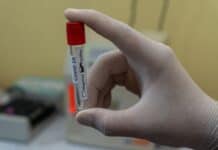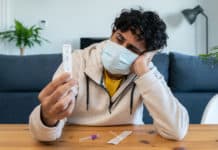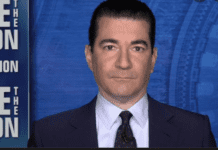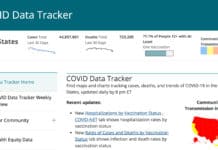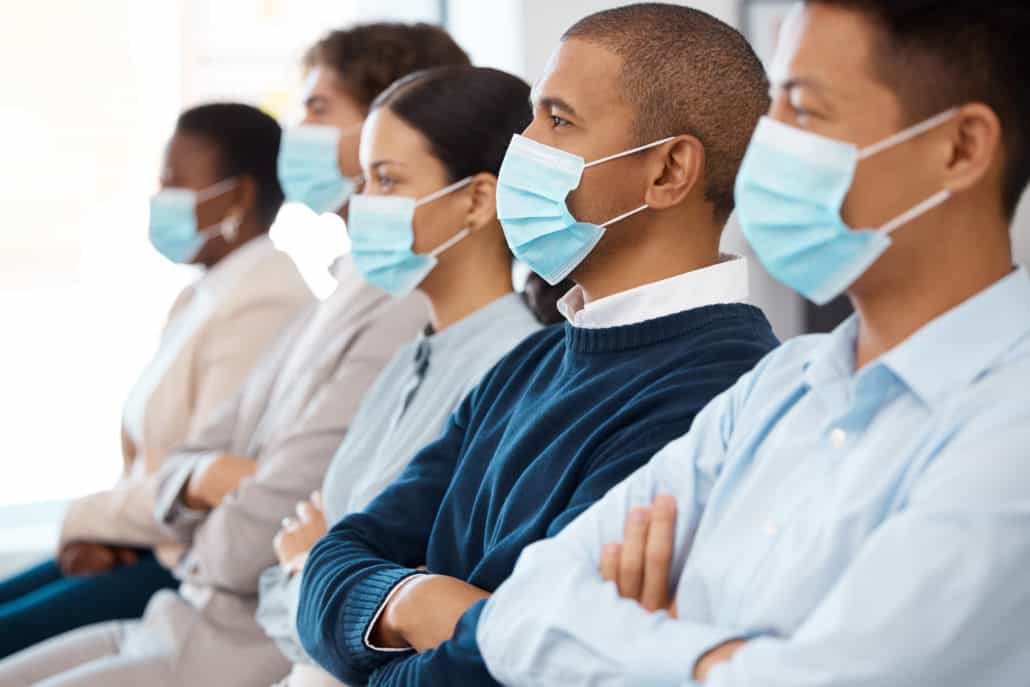
Masking recommendations — but not yet mandates — are again on the table as many areas of the U.S. begin to see a rise in Covid cases, as well as the flu and the common respiratory illness known as RSV.
Masking recommendations are once again becoming commonplace in many parts of the U.S., though it’s unlikely that the masking mandates of earlier Covid surges will make a comeback, at least for those outside of public school systems. For example, while Philadelphia has imposed a temporary mask mandate for students and school staff when they return to class after winter vacation, so far, there has been no talk of extending that mandate to other venues.
New York state isn’t going as far as mandating masking, but it is “urging a community-wide approach, inclusive of schools, to again take precautions this holiday season and winter that can prevent the spread of respiratory viruses and protect young children, older individuals, and those with underlying health conditions,” according to a letter from the Commissioners of Health and Education. The New York City Department of Health also has issued an advisory that everyone should wear a mask when “in an indoor public setting, including inside stores, offices, lobbies, hallways, elevators, public transportation, schools, child care facilities and other public shared spaces.”
However, on the West Coast, Los Angeles has not ruled out reinstating masking mandates in public spaces as its Covid case rate continues to climb. Dr. Barbara Ferrer, Director of the Los Angeles County Department of Public Health, said the department would issue a mask order if the percentage of COVID-19 patients reaches 10% and if the county remains under “high” activity for COVID-19 for two straight weeks — something that has not yet occurred, but may if conditions continue along their current path. For now, LA officials are recommending that everyone over the age of two mask up until the current surge passes.
Chicago isn’t even issuing a formal recommendation on public masking yet, though Department of Public Health commissioner Dr. Allison Arwady, did say, “I would advise putting a mask on while we’re in high respiratory season,” according to NBC Chicago. However, if key indicators such as hospitalization numbers increase, “we may make some more broad recommendations for [the] general population for indoor mask wearing, not requirements right at this point, but some more recommendations.”
The resurgence of masking recommendations, along with reminders about frequent hand washing, vaccination and isolating when feeling ill, follows the climb in Covid and flu cases, which began to increase post-Thanksgiving indoor get-togethers. One good sign is that the concern that hospitals would be overwhelmed with a “tripledemic” are waning now that cases of respiratory syncytial virus, or RSV, have peaked and are on the decline, according to the Centers for Disease Control and Prevention (CDC). But Covid and flu are still rising, according to CDC data. And most public health authorities anticipate that trend to continue through the end of December as people continue to gather over the holidays.
The public health expert recommendations are not that everyone, everywhere should again don a high-quality mask. Rather, they say that at this point in the pandemic, individuals at high risk due to age, illness or other factors should reconsider masking, especially if they live, work or are meeting at an area of high risk for Covid.
Among the specific guidance the CDC offers on masking is that people should wear a high-quality mask or respirator when their county reaches a ”high” Covid-19 community level, which as of Dec. 15 applied to almost 6% of counties in the U.S, according to the CDC’s Covid Data Tracker. Check the county-by-county listings to learn more about a specific area. Counties must exceed levels on three main indicators to be considered at high risk, including new Covid cases per 100,000 people, hospitalizations per 100,000 people, and percentage of in-patient beds occupied by Covid patients.
“I don’t want to go to mandates because I think over much of the United States, you will get a lot of pushback, and people will ignore it,” Dr. William Schaffner, a professor in the Division of Infectious Diseases at Vanderbilt University Medical Center and medical director of the National Foundation for Infectious Diseases, told CNN. “Public health recommendations have to be acceptable.”
Dr. Anthony Fauci, the soon-to-retire director of the National Institute of Allergy and Infectious Diseases and public face of public health policy throughout the Covid pandemic, reiterated last week on NBC Nightly news that he doesn’t believe mask mandates are needed at this point. “I’m not talking about mandating anything,” Fauci said. “I’m talking about just common sense of saying, ‘You know, I really don’t want to take the risk of myself getting infected and, even more so, spreading it to someone who’s a vulnerable member of my family.’”
You May Also Be Interested In…
Testing is Key for Duty of Care at Meetings
Meetings Etiquette for Post Pandemic Events



